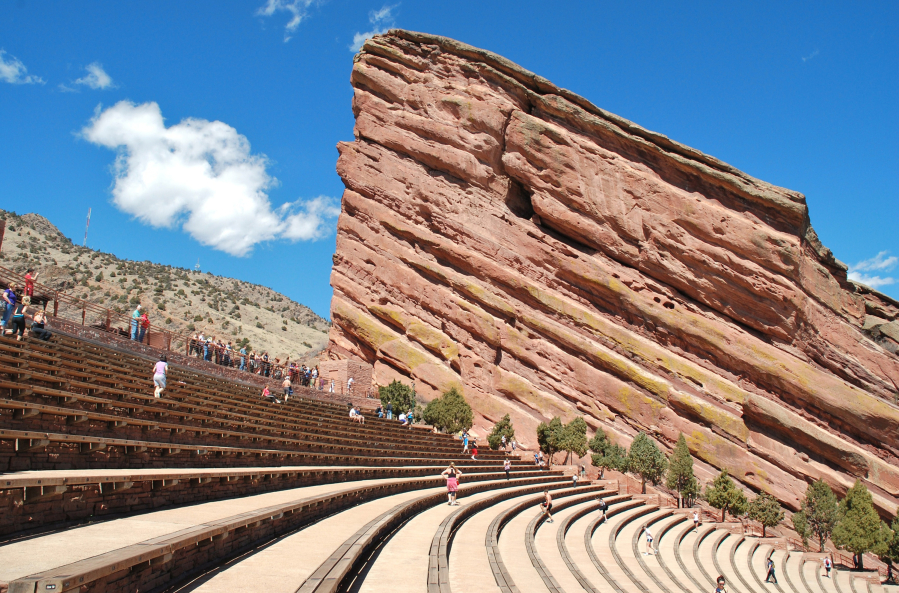COLORADO SPRINGS, Colo. — As an open-air theater built into a rock formation, Red Rocks Amphitheatre combines awe-inspiring natural scenery with natural acoustic splendor to create a one-of-a-kind venue.
Here’s a look at how Red Rocks became the iconic venue that it is today.
The geological beginning
Red Rocks Amphitheatre formed as part of the Fountain Formation, which also formed the Garden of the Gods and the Flatirons. At the end of the Cretaceous Period, the Fountain Formation went through a tectonic event called the Laramide Orogeny about 75 million to 55 million years ago, which lifted and tilted the rocks, giving Red Rocks its notable slabs. The weathering of oxidizing minerals like iron gave the rocks their reddish color.
Humans have since used Red Rocks for thousands of years, and its role as a musical venue goes back to when the Ute people used it as a sacred site and gathering spot for music. Euro-Americans started to take interest in the spot as they moved to the Front Range during the Colorado Gold Rush of 1858-59.
Ownership
Marion Burts became the recorded owner of Red Rocks in 1872, originally naming the area “Garden of the Angels.” In 1878, he sold it to Leonard H. Eicholtz, who developed it into a park suitable for visitation, with roads, trails, picnic grounds, steps and ladders.
In 1906, Eicholtz sold the park to John Brisben Walker, who renamed it “Garden of the Titans” and further developed it to include a wooden stage at the base of the naturally acoustic bowl framed by the “Creation” and “Ship” rocks — the two most recognizable wall-like formations at the spot.
Walker then sold the central portion of the park to Red Rocks Corp., run by John Ross, who then donated 530 acres of Red Rocks to the city of Denver in 1927.
By 1932, the Denver Department of Parks and Recreation had purchased nearly 690 acres in Red Rocks Park.
Construction
As part of the Civilian Conservation Corps, a project to convert Red Rocks into a formal outdoor theater was approved for federal funding in 1936, and 200 men from Durango began working on roadways and bank side sloping.
The city of Denver appointed Burnham F. Hoyt as head architect of the theater, and construction of it began with leveling the floor between the Ship and Creation rocks. Workers had to use dynamite to reverse the angled slope.
Music
Red Rocks held a soft opening for local officials on June 8, 1941. The amphitheater officially opened to the public on June 15, 1941, with a performance featuring Helen Jepson of New York’s Metropolitan Opera singing “Ave Maria.”
Now, Red Rocks is a premier concert venue, with many famous musicians having since performed there. Some of the best-known artists to have held a set at Red Rocks include the Beatles, Louis Armstrong, Ray Charles, Ella Fitzgerald, the Eagles, Journey, the Grateful Dead, Kiss, Bon Jovi and Stevie Nicks.
As well as concerts, Red Rocks Park hosts events like movie nights, yoga and an Easter sunrise church service, as well as weddings and graduations.
Preservation
Red Rocks obtained National Historic Landmark status on July 21, 2015, due to the efforts of Friends of Red Rocks. The organization works to prevent the over-commercialization of the venue, conducts regular cleanups and contributes to the Open Space initiative.
All visitors will appreciate the unique mixture of geology and music that make Red Rocks one of the nation’s most celebrated venues.



